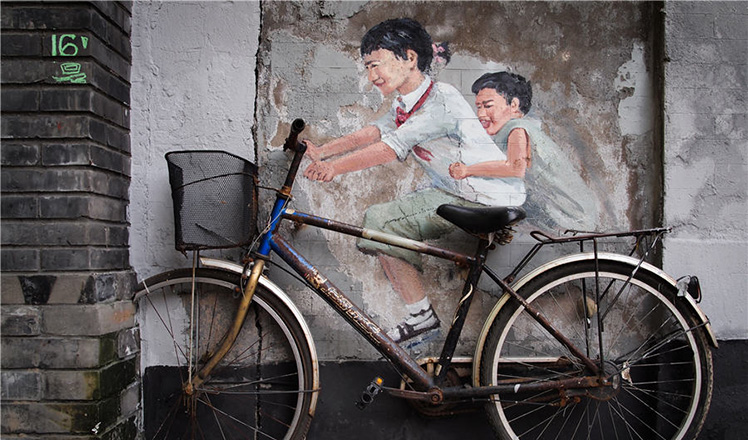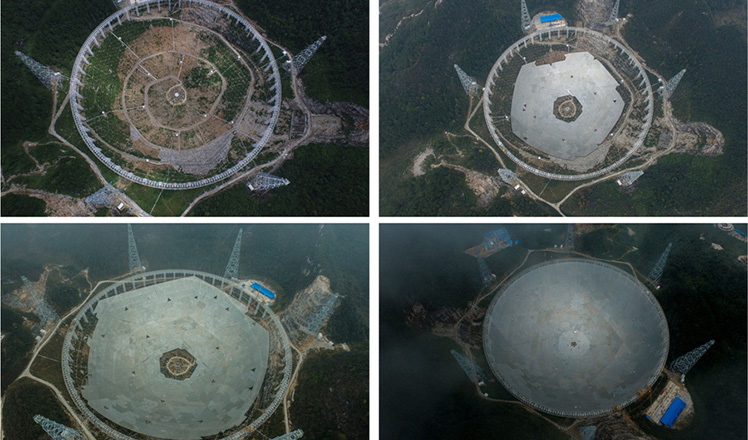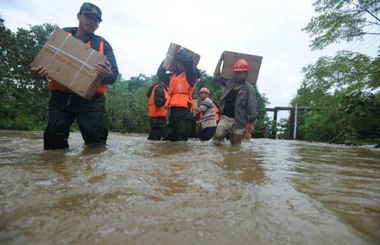A short ride to clean, better life and future
Updated: 2016-07-05 07:45
By John Coulter(China Daily)
|
||||||||
 |
|
A woman rides a bicycle along a bicycle-lane road in Beijing that has been painted red, Aug 18, 2013. Beijing is spending about 30 million yuan ($4.9 million) this year to improve the capital's sidewalks and bicycle lanes, and keep them free of motor vehicles. [Mao Yanzheng / Asianewsphoto] |
The Beijing municipal government is trying to ease traffic jams by imposing congestion fees on drivers. Since many are opposed to the move, the Beijing authorities should encourage more people to ride bicycles, because it is the best way to reduce the use of cars.
Cars are better than bikes, but not if everyone has one on the road at the same time. The visual rhythm of thousands of cyclists on Beijing streets in 1981 still lingers in my mind, contrasted against today's increasingly untenable traffic jams. Average speeds to destination are down. Young careerists arrive at work already frazzled by the unpleasant brushes with freeway crawl and road rage.
Urban planners in cities like Beijing want to emulate other cities that have admirable biking policies. A survey of the top 20 cities with the best bike systems shows Europe as the leader, with Japan as the runner-up. Beijing and other North China cities didn't fare well in the rankings, even though China is known as a bicycle-friendly country.
But cities in North China cannot use cold weather as an excuse to turn their back on bikes, because 30 percent of urban Scandinavians ride to work through winter.
The Scandinavian success stories came through visionary leadership. Copenhagen's celebrity Klaus Bondam championed investment in cycle paths and other incentives. The Barcelona city government team did thorough homework to achieve outstanding results in the bike-sharing system. In-depth research in the Spanish city revealed that most tourists don't use bikes. So the system now in place is available to local residents-for only €47.15 ($52.52) a year and for an average of 10 rides a day from any of the 420 stations. Local residents know their city offers efficient bike ride options. They also know where a bike can beat a car in commuting time.
Hangzhou in East China's Zhejiang province has the largest number of bikes in the world in the bike-share system-67,000 at last count. Research shows surprising findings-most notably that 65 percent bike users also own cars and 30 percent of them incorporate bike rides with other forms of transport on regular routes. China has 19 cities where the bike-sharing system has been a success, but there are cases where the bicycle racks on pavements seem unused and uncared for. The reason lies in fear of scorn or "loss of face".
To be seen on a bike, especially if arriving as a guest or for business, draws comments such as meiyou mianzi, having no "face", which can bring ignominy. This is especially true for those eager to climb up the career ladder or those trying to impress their partners.
If there are some universal features on the pathway to development, there are also variations in cultures. How one "gets there" is a prominent factor-in medieval times, a man was judged by his horse, today he is judged by his car.
Americans infamously love 2 ton V8's. In the 1980 US presidential election, incumbent president Jimmy Carter advocated environmentally friendly transport only to be lampooned by Republican candidate Ronald Regan who famously said little cars are for Japanese. It proved a winning factor.
But the European and Japanese economies that developed modern lifestyles without dinosaur-sized cars are better than the American model, because biking is most of the time better than driving cars.
Residents of Beijing and other traffic-choked Chinese cities need the vision to plan new infrastructure that has a special place for bike users.
The situation has to change in favor of bikes. If it doesn't, it would be enough to send Laozi, complete with his Tao Te Ching and yellow buffalo, riding into the sunset.
The author is a fellow at the Environment Futures Research Institute, Griffith University, Australia.
- Proposed traffic congestion charge in Beijing being debated
- Will congestion fee help ease traffic jams in Beijing?
- Introducing a congestion charge makes real sense
- Charging to drive unlikely to cut capital's congestion
- Beijing residents brace for fee on congestion
- Congestion charge in capital unlikely to cut car use much
- Beijing finalizes preliminarily work on congestion charge
- Will autonomous vehicles drive traffic congestion off a cliff?

 In pics: Bikes in Beijing hutongs
In pics: Bikes in Beijing hutongs
 The world in photos: June 27- July 3
The world in photos: June 27- July 3
 Installation process of world's largest telescope in China
Installation process of world's largest telescope in China
 Dam's floodway blasted to discharge water in Hubei
Dam's floodway blasted to discharge water in Hubei
 Tenth birthday of the world's highest altitude train line
Tenth birthday of the world's highest altitude train line
 Crucial moments in the history of the CPC
Crucial moments in the history of the CPC
 Chibi Maruko-chan 25th anniversary exhibition
Chibi Maruko-chan 25th anniversary exhibition
 Turkey in mourning for 42 killed in assault on airport
Turkey in mourning for 42 killed in assault on airport
Most Viewed
Editor's Picks

|

|

|

|

|

|
Today's Top News
Abe's blame game reveals his policies failing to get results
Ending wildlife trafficking must be policy priority in Asia
Effects of supply-side reform take time to be seen
Chinese State Councilor Yang Jiechi to meet Kerry
Chinese stocks surge on back of MSCI rumors
Liang avoids jail in shooting death
China's finance minister addresses ratings downgrade
Duke alumni visit Chinese Embassy
US Weekly

|

|









